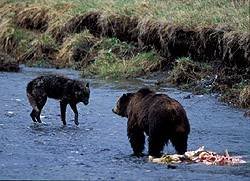Today is the fourth day of the twelve days of Christmas.
 On the fouth day is celebrated the Feast of the Holy Innocents. This feast honors those children slaughtered on the order of King Herod, as told in the second chapter of the Gospel of Matthew. The Magi had passed through Jerusalem and let it be known they were going to visit the newborn King. Herod, hearing of this, called his advisors together, one of whom informed Herod of a prophecy that a child would be born in Bethlehem who would become “a ruler who is to shepherd the people of Israel.” When later the Magi later refused to tell Herod where they had found Jesus, Herod ordered the slaughter of all children under two years of age living in Bethlehem. It is estimated that, in the small town of Bethlehem, that this would have meant slaughtering about 25 children. And it is their martyrdom that the Feast of the Holy Innocents honors.
On the fouth day is celebrated the Feast of the Holy Innocents. This feast honors those children slaughtered on the order of King Herod, as told in the second chapter of the Gospel of Matthew. The Magi had passed through Jerusalem and let it be known they were going to visit the newborn King. Herod, hearing of this, called his advisors together, one of whom informed Herod of a prophecy that a child would be born in Bethlehem who would become “a ruler who is to shepherd the people of Israel.” When later the Magi later refused to tell Herod where they had found Jesus, Herod ordered the slaughter of all children under two years of age living in Bethlehem. It is estimated that, in the small town of Bethlehem, that this would have meant slaughtering about 25 children. And it is their martyrdom that the Feast of the Holy Innocents honors.
The Coventry Carol, performed below by Alison Moyet, tells the story.
This 15th century carol has an interesting back story. In Medieval Eur ope, few people were literate and most copies of the bible where in Latin, so the local clergy used alternative methods to teach the bible. One was through the use of the “poor man's bible” - stained glass windows which contained images from biblical stories, sort of a millennium old precursor to the modern comic books. One of the most famous “poor man's bible” is the 14th century window in Canterbury Cathedral shown here on the right.
ope, few people were literate and most copies of the bible where in Latin, so the local clergy used alternative methods to teach the bible. One was through the use of the “poor man's bible” - stained glass windows which contained images from biblical stories, sort of a millennium old precursor to the modern comic books. One of the most famous “poor man's bible” is the 14th century window in Canterbury Cathedral shown here on the right.
A second method of teaching the bible was through Mystery plays that told biblical stories in the vernacular and, often, included song. These plays were performed by the clergy outside of the Church until the 12th century, when the conduct of the plays were turned over to town guilds. It is from one of these plays performed in 15th century Coventry, England that the Coventry Carol comes down to us.
The traditional way to celebrate today is to turn over rule of the house to the youngest child. It is the youngest who decides the day's foods, drinks, music, entertainments, etc. Also traditional is a red desert, especially a pudding or ice cream with a red sauce, such as raspberry.
Tweet
Friday, December 28, 2012
The 4th Day Of Christmas - The Slaughter Of The Innocents, The Coventry Carol & The Poor Man's Bible
Posted by
GW
at
Friday, December 28, 2012
0
comments
![]()
Labels: 4th day of Christmas, Canterbury, Christmas, Feast of the Holy Innocents, herod, mystery plays, poor mans bible, twelve days of christmas
Wednesday, December 28, 2011
On The Fourth Day Of Christmas . . .
Reposted from 2010:
Today is the fourth day of the twelve days of Christmas.
 On the fouth day is celebrated the Feast of the Holy Innocents. This feast honors those children slaughtered on the order of King Herod, as told in the second chapter of the Gospel of Matthew. The Magi had passed through Jerusalem and let it be known they were going to visit the newborn King. Herod, hearing of this, called his advisors together, one of whom informed Herod of a prophecy that a child would be born in Bethlehem who would become “a ruler who is to shepherd the people of Israel.” When later the Magi later refused to tell Herod where they had found Jesus, Herod ordered the slaughter of all children under two years of age living in Bethlehem. It is estimated that, in the small town of Bethlehem, that this would have meant slaughtering about 25 children. And it is their martyrdom that the Feast of the Holy Innocents honors.
On the fouth day is celebrated the Feast of the Holy Innocents. This feast honors those children slaughtered on the order of King Herod, as told in the second chapter of the Gospel of Matthew. The Magi had passed through Jerusalem and let it be known they were going to visit the newborn King. Herod, hearing of this, called his advisors together, one of whom informed Herod of a prophecy that a child would be born in Bethlehem who would become “a ruler who is to shepherd the people of Israel.” When later the Magi later refused to tell Herod where they had found Jesus, Herod ordered the slaughter of all children under two years of age living in Bethlehem. It is estimated that, in the small town of Bethlehem, that this would have meant slaughtering about 25 children. And it is their martyrdom that the Feast of the Holy Innocents honors.
The Coventry Carol, performed below by Alison Moyet, tells the story.
This 15th century carol has an interesting back story. In Medieval Eur ope, few people were literate and most copies of the bible where in Latin, so the local clergy used alternative methods to teach the bible. One was through the use of the “poor man's bible” - stained glass windows which contained images from biblical stories, sort of a millennium old precursor to the modern comic books. One of the most famous “poor man's bible” is the 14th century window in Canterbury Cathedral shown here on the right.
ope, few people were literate and most copies of the bible where in Latin, so the local clergy used alternative methods to teach the bible. One was through the use of the “poor man's bible” - stained glass windows which contained images from biblical stories, sort of a millennium old precursor to the modern comic books. One of the most famous “poor man's bible” is the 14th century window in Canterbury Cathedral shown here on the right.
A second method of teaching the bible was through Mystery plays that told biblical stories in the vernacular and, often, included song. These plays were performed by the clergy outside of the Church until the 12th century, when the conduct of the plays were turned over to town guilds. It is from one of these plays performed in 15th century Coventry, England that the Coventry Carol comes down to us.
The traditional way to celebrate today is to turn over rule of the house to the youngest child. It is the youngest who decides the day's foods, drinks, music, entertainments, etc. Also traditional is a red desert, especially a pudding or ice cream with a red sauce, such as raspberry.
Tuesday, December 28, 2010
On The Fourth Day Of Chrismas . . . The Feast Of The Holy Innocents
Today is the fourth day of the twelve days of Christmas.
 On the fouth day is celebrated the Feast of the Holy Innocents. This feast honors those children slaughtered on the order of King Herod, as told in the second chapter of the Gospel of Matthew. The Magi had passed through Jerusalem and let it be known they were going to visit the newborn King. Herod, hearing of this, called his advisors together, one of whom informed Herod of a prophecy that a child would be born in Bethlehem who would become “a ruler who is to shepherd the people of Israel.” When later the Magi later refused to tell Herod where they had found Jesus, Herod ordered the slaughter of all children under two years of age living in Bethlehem. It is estimated that, in the small town of Bethlehem, that this would have meant slaughtering about 25 children. And it is their martyrdom that the Feast of the Holy Innocents honors.
On the fouth day is celebrated the Feast of the Holy Innocents. This feast honors those children slaughtered on the order of King Herod, as told in the second chapter of the Gospel of Matthew. The Magi had passed through Jerusalem and let it be known they were going to visit the newborn King. Herod, hearing of this, called his advisors together, one of whom informed Herod of a prophecy that a child would be born in Bethlehem who would become “a ruler who is to shepherd the people of Israel.” When later the Magi later refused to tell Herod where they had found Jesus, Herod ordered the slaughter of all children under two years of age living in Bethlehem. It is estimated that, in the small town of Bethlehem, that this would have meant slaughtering about 25 children. And it is their martyrdom that the Feast of the Holy Innocents honors.
The Coventry Carol, performed below by Alison Moyet, tells the story.
This 15th century carol has an interesting back story. In Medieval Eur ope, few people were literate and most copies of the bible where in Latin, so the local clergy used alternative methods to teach the bible. One was through the use of the “poor man's bible” - stained glass windows which contained images from biblical stories, sort of a millennium old precursor to the modern comic books. One of the most famous “poor man's bible” is the 14th century window in Canterbury Cathedral shown here on the right.
ope, few people were literate and most copies of the bible where in Latin, so the local clergy used alternative methods to teach the bible. One was through the use of the “poor man's bible” - stained glass windows which contained images from biblical stories, sort of a millennium old precursor to the modern comic books. One of the most famous “poor man's bible” is the 14th century window in Canterbury Cathedral shown here on the right.
A second method of teaching the bible was through Mystery plays that told biblical stories in the vernacular and, often, included song. These plays were performed by the clergy outside of the Church until the 12th century, when the conduct of the plays were turned over to town guilds. It is from one of these plays performed in 15th century Coventry, England that the Coventry Carol comes down to us.
The traditional way to celebrate today is to turn over rule of the house to the youngest child. It is the youngest who decides the day's foods, drinks, music, entertainments, etc. Also traditional is a red desert, especially a pudding or ice cream with a red sauce, such as raspberry.
The 12 Days Of Christmas
The first eight days of Christmastide are known as the Octave
The 1st Day - Celebrating The Birth Of Christ
The 2nd Day - Feast of St. Stephen, The First Martyr of the Church
The 3rd Day - Feast of St. John the Evangelist & The Blessing Of The Wine
The 4th Day - Feast of the Holy Innocents
The 5th Day - Feast of St. Thomas a' Becket
The 6th Day - Feast of the Holy Family
The 7th Day - Feast of St. Sylvester
The 8th Day – Feast of the Circumsision (& The Feast Of Fools - no longer celebrated)
The 9th Day – Feast of the Holy Name (1st Sunday of the New Year, unless that day falls on the 1st, 6th or 7th of January, in which case it falls on the 2nd of January)
10th Day of Christmas - Open
11th Day of Christmas – Open
12th Night
Epiphany
13 January – Baptism of Jesus
14 January - Feast Of The Ass - no longer celebrated
Posted by
GW
at
Tuesday, December 28, 2010
0
comments
![]()
Labels: Canterbury, Feast of the Holy Innocents, fourth day of chritmas, herod, mystery plays, poor mans bible, twelve days of christmas
Thursday, December 31, 2009
On The Seventh Day Of The Twelve Days of Christmas

And you thought Christmas was over? You obviously don't know your Medieval history. Fortunately, we have a historian on the net who blogs on nothing else - Got Medieval. It is one of the most interesting of history blogs on the net . . . and do be sure to check out the Medieval personals on the side of his blog for any lonely hearts out there:
. . . The Nativity is celebrated on December 25, a date set in 337 by Pope St. Julius I. So, Merry 1672th Christmas, everybody! For most of the Middle Ages, Christmas was not, as it is today, the culmination of the holiday season, but rather its beginning. The twelve days of Christmas begin on Christmas, after all, and stretch until January 5th, also known as Twelfth Night, the day before Epiphany, the day the Magi arrived.
As an aside, scratch most any Christian holiday and you'll find all sorts of pagan customs caught up in it. That does not detract from the religious meaning of the holiday, but merely goes to show how early Christianity followed a policy of "syncretism" during the process of conversion. They adapted as much as possible of the local pagan customs into the overlay of Christianity. Indeed, our recent "1672nd" celebration of Christmas is itself very much a creature of syncretism, adapting the ancient Roman festival of Saturnalia into a celebration of the birth of Christ. And the Celtic Cross, with its overlay of a sun symbol, is yet another result of syncretism.
Probably the most famous memorialization of a papal order to use the process of syncretism comes from the writings of the Venerable Bede, who notes that in 601 A.D., Pope Gregory sent a letter to his missionaries instructing them to adapt local customs and places of worship as part of the conversion process whenever possible. If you want to learn more about the history of Christmas, by the way, there are a series of good videos I posted here. But none of that includes the additional information provided by the proprietor of Got Medieval, so to continue with his erudition:
December 26 marks the Feast of St. Stephen the Protomartyr of all Christianity. You may remember him as the guy that Saul helps to stone in Acts. And if you're American, you probably spent at least part of your childhood wondering why "Good King Wenceslas" looked out on the feast of Stephen instead of Christmas, since you sing the song at Christmastime. . . .
The Feast of St. John the Evangelist--not to be confused with St. John the Baptist--comes the next day, on December 27. St. John has the distinction of being the only one of the original twelve apostles to live to be an old man, rather than dying as a young martyr. According to one story, John was almost martyred, however, when someone tried to poison his wine, but he was saved because it was his habit to bless his wine before he drank it. John's blessing didn't just passively purify the wine--according to the story, the poison rose up magically from the chalice and formed into the shape of a servant that then slithered off. Thus, St. John often appears in medieval iconography as a man holding a chailce with what looks like steam coming out of it.*** In recognition of this near miss, traditional Catholics celebrate St. John's with lots of wine. I guess magic snakes are as good an excuse as any.
If you look closely at the image from the medieval calendar above, you can see that December 28 is illustrated by two midgets impaled on a spear that's being propped up by someone's decapitated head. That's because December 28th is The Feast of the Holy Innocents, commemorating the children massacred by Herod in his failed attempt to kill off Christ. . . .
St. Thomas Becket, Henry II's "turbulent priest" is commemorated with a feast on December 29. (He's the one pictured above near the end with a dagger sticking out of his head.) As a Chaucerian, I'm pretty tired of Thomas Becket. I mean, what's the big deal? He's just a bishop who got killed by some overzealous royal sycophants. Sure, he's known for curative powers, but what saint isn't? . . .
Rounding out the year, The Feast of Pope St. Sylvester is celebrated on December 31. Sylvester is chiefly notable for being the pope that Emperor Constantine was said to have given all his lands to, thus granting the papacy superiority to all temporal monarchs--at least, that's the story the popes told. They even had a document forged, the so-called Donation of Constantine, to back them up. Lorenzo Valla, the Renaissance scholar, eventually pointed out the many problems with it, including the fact that nobody seems to have mentioned the Donation in print until about four hundred years after it was supposed to have been written. Oh, silly medieval popes, your pitiful forgeries can only fool people for six hundred years or so. Why do you even try?
Lol. Hmmm, just as a person is the sum of their choices in life, so are we, in a collective sense, the sum of our history. It pays to know it. And besides, it's always interesting and often humorous. Do pay Got Medieval a visit for his additional commentary on the Saints above.














































